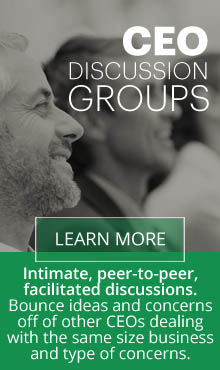 If change were an acronym, what would it be?
If change were an acronym, what would it be?
C.H.A.N.G.E.: Constant Havoc Amidst Needy Grumbling Employees or
C.H.A.N.G.E.: Challenging, Hostile, and No-Good Edicts (from management) or
C.H.A.N.G.E.: Corrosive Headaches Arriving and Not Going (away) Effectively
We laugh because it is funny, and we laugh because it is true. Even organizations and employees who claim to thrive on change reach their limits, and as a rule, we all struggle with the pace of change.
Recently, an organization was faced with several changes happening simultaneously – a change in leadership, a change in policy and practice, and a change to the way peer teams worked together. That change was causing internal conflicts, office behavior issues, and other related challenges. The employees were struggling to be productive and stay focused. Many organizations find that employees shift their focus to the change and the challenges that come with change, and then find it difficult to return to work as usual.
Can we all agree that organizational change happens, if not routinely, then certainly regularly? If that is true, then how can you help your organizational teams – your colleagues – manage that change emotionally, and work through it in order to get back to productivity as soon as possible?
One strategy is to use a version of the Tuckman model to encourage your employees to work through their own challenges with whatever change is occurring. Information on the Tuckman model is widely available should you want to know more, but in essence Tuckman outlined four critical stages – or phases – of change, as follows.
In the first stage of change, Forming, the team (and individuals) are forming. They learn about the opportunity and challenges, they begin to tackle the change head-on. Team members tend to behave quite independently. They may be motivated and are usually on their best behavior but very focused on themselves. At this stage, you may begin to see how individual team members respond to change in general and to specific pressure points.
In the second stage, Storming, the group hits the proverbial “wall.” The individuals react in various ways to the change, and emotions run high. Different solutions compete for consideration. The group may feel chaotic or dysfunctional in this phase. In some cases storming can be resolved quickly. In others, the team members begin acting out or focusing on minutiae to evade real issues. Here’s the secret, though. The storming stage is critical to the growth of the team. It can be contentious, unpleasant and even painful to members of the team who are averse to conflict. But every team – for every organizational change – will go through a storming phase before getting to the last two phases.
In the Norming phase, teams begin to work together naturally. Productivity begins to increase; team members agree to rules, professional behaviors, and working tools. Trust goes up and motivation increases.
After time, most teams will reach the Performing stage. These high-performing teams are able to function as a unit as they find ways to get the job done smoothly and effectively without inappropriate conflict or the need for external supervision. Team members have become interdependent.
If your organization is in the throes of change, consider this application of the Tuckman model to allow your team the space and the time to identify in which of the four phases they find themselves, and to define what the characteristics of each phase look like. One organization recently brainstormed what the four phases looked like for their organization, and came up with this list:
| Forming Feeling anxiety, relief, curiosity Asking “who am I?” Dangling Re-proving yourself |
Storming Become aware of contrasting emotions Different opinions/ways of doing things Confusion and inconsistency Silence and anger Assumptions Increased work load |
| Norming New agreements about how to work Resignation: time to move forward Clear expectations Acceptance of change Finding your role/place |
Performing Change is accepted/embraced Well-oiled machine, synergy Purposefully reaching out to others Open communication and collaboration |

 Jeri Quinn from Driving Improved Results is an executive coach, management consultant, speaker and author who focuses on communication in her work with executives and companies. She is the author of The Customer Loyalty Playbook, 12 Game Strategies to Drive Improved Results in Your Business. With more than 40 years as a serial entrepreneur.
Jeri Quinn from Driving Improved Results is an executive coach, management consultant, speaker and author who focuses on communication in her work with executives and companies. She is the author of The Customer Loyalty Playbook, 12 Game Strategies to Drive Improved Results in Your Business. With more than 40 years as a serial entrepreneur.

